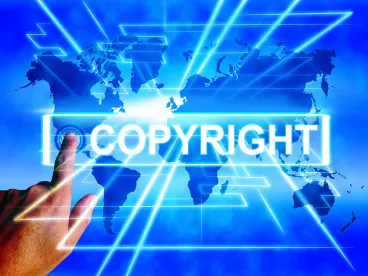On March 4, 2019, the United States Supreme Court resolved a longstanding split among the circuit courts concerning what exactly the copyright registration prerequisite to filing a copyright lawsuit means – whether an application to register is sufficient or an actual issued registration is required. The Supreme Court chose the latter holding that a copyright owner must first obtain a copyright registration certificate from the Copyright Office before filing a copyright infringement suit.
In Fourth Estate Public Benefit Corp. v. Wall-Street.Com, LLC, the plaintiff Fourth Estate, a news organization, licensed journalism works to the defendant Wall-Street.com, a news website, for use on its website for a prescribed time period. Defendant continued to keep the content up on the site after canceling the parties’ licensing agreement, allegedly breaching the license.
Because Fourth Estate had yet to register the content for copyright protection, it filed an application for registration with the Copyright Office at the same time as filing a copyright infringement suit against Wall-Street.com and its owner. The District Court dismissed the case, and the Eleventh Circuit Court of Appeals affirmed, holding that Fourth Estate had to wait to bring an infringement suit until the copyright office made a decision on the pending application for registration.
While copyright registration is not required for valid copyright ownership – copyright is secured automatically when the work is “created,” i.e. fixed in a tangible medium like a copy or phonorecord—a registration is required in order to bring a lawsuit for copyright infringement. According to the Copyright Act of 1976, 17 U.S.C. § 411, a copyright lawsuit cannot be brought until “registration of the copyright claim has been made in accordance with this title.”
The meaning of the word “made” as used in that section has caused the rift between the circuit courts and is exactly what the Justices had to address in Wall-Street.Com. The Eleventh Circuit followed the “registration” approach, taking the position that registration is not “made” until the Copyright Office accepts the copyright and issues the registration certificate.
The Ninth and other Circuits took the “application” approach holding instead that registration is “made” as soon as the copyright registration application is filed and paid for. Many believe the “application” to be the fairer of the two given that the Copyright Office, on average, takes seven months to issue a certificate, thereby encroaching upon over 25% of the three-year statute of limitations on copyright infringement claims. Additionally, seven months is viewed by some as a long time for a copyright owner to have to wait to enforce his legal rights in an infringement dispute, especially in the digital age of instant media.
Justice Ginsburg, writing the opinion for a unanimous court, stated that the Eleventh Circuit’s registration approach was the only way to read the statute satisfactorily given that “[t]he phrase ‘registration . . . has been made’’ refers to the Copyright Office’s act of granting registration, not to the copyright claimant’s request for registration.”
Ginsburg argued that certain exceptions to the registration requirement strengthened this view. Specifically, Section 411(a) of the Copyright Act contains an exception and allows parties to file an infringement suit after an application is filed and rejected. So, if the party could have filed an infringement suit under the Ninth Circuit’s application approach as soon as the application was submitted and paid for, then that provision would be rendered superfluous.
Additionally, Section 408 grants a “preregistration” option for copyright owners in fear of prepublication infringement, along with an exception that permits these owners to file suit before registration is completed. This provision was also reasoned to be unnecessary if “made” was interpreted to mean as soon as the application was completed and paid for.
Equally important, Congress considered but rejected a bill in 1993 to amend the Copyright Act to allow alleged infringed parties to file suit immediately upon submission of a copyright application. Arguments were raised that forcing copyright owners to wait for registration would leave them in a state of legal limbo and could have “a monumental impact on an authority’s ability to protect the fruits of her creative endeavors.” Although Ginsburg acknowledged the pitfalls of the administrative lag, those pitfalls were an insufficient reason to revise congressionally composed text. That was a problem Congress could alleviate but which the Supreme Court could not cure.
The case contains many takeaways for copyright owners. For example, if a copyright owner fears that her work is presently or likely to be infringed upon, she is encouraged to seek registration or preregistration with the Copyright Office. If she fails to seek registration right away and she later learns of infringement, the length of time it will take her to obtain the registration will eat away at the statute of limitations period. If she is concerned with timing, she could always invoke the Copyright Office’s “special handling” process, which would allow her to obtain a certificate within a matter of a few days, but that would cost an extra $800 and depends on how many other “special handling” applicants are in queue.
This SCOTUS decision aside, there are many benefits of registration.
First, registration serves as a public record of the author’s copyright claim, negating the innocent infringer defense.
Second, if registered within five years of publication, the registration will be prima facie evidence of the validity of the copyright and the facts stated in the certificate.
Third, if registration is obtained within three months of publication or prior to an infringement of the work, statutory damages and attorney’s fees will be available to the copyright owner in litigation. Otherwise, the owner can only get an award of actual damages and the defendant’s profits.
Lastly, the U.S. Customs Service, upon receipt of a registration certificate, could also bar the importation of pirated or counterfeit works into the U.S.



 />i
/>i

